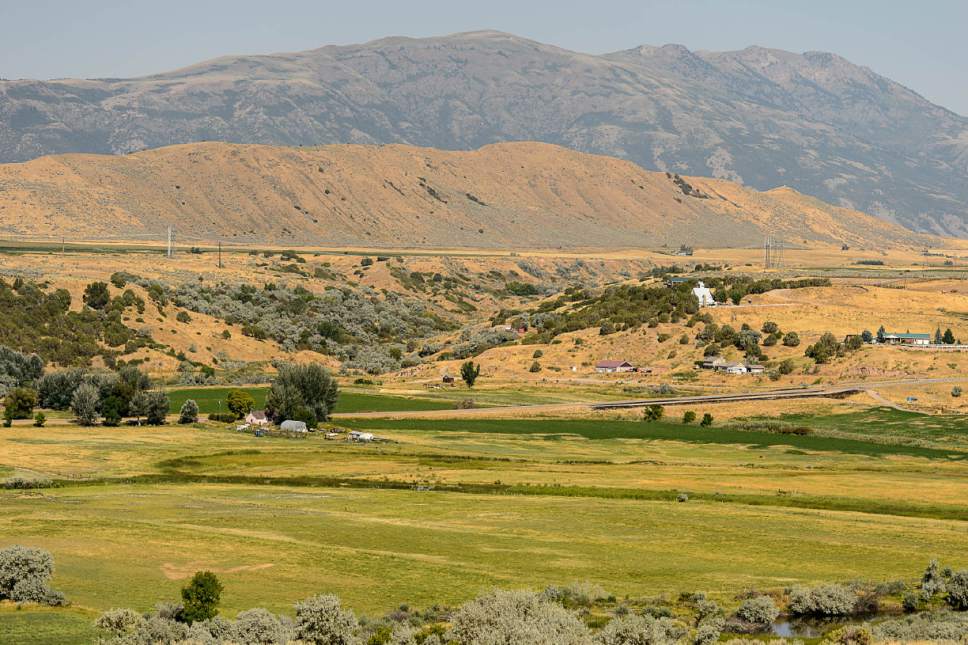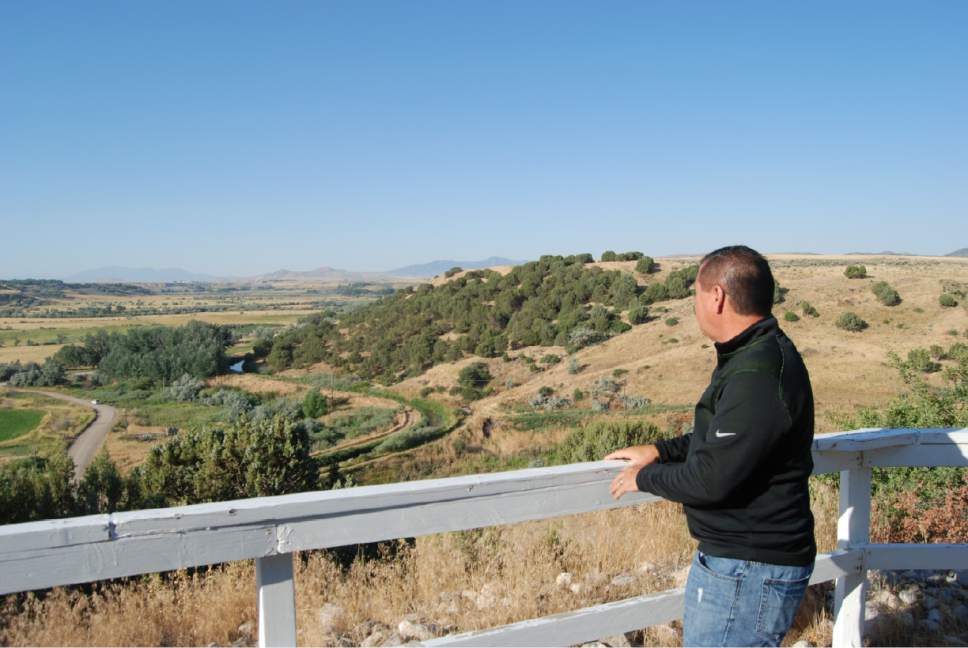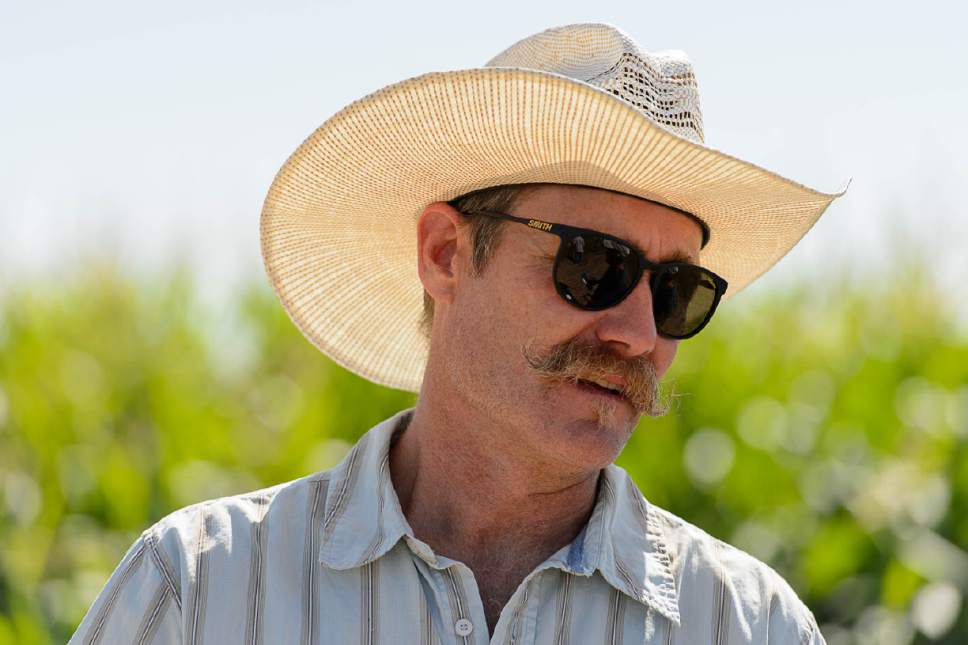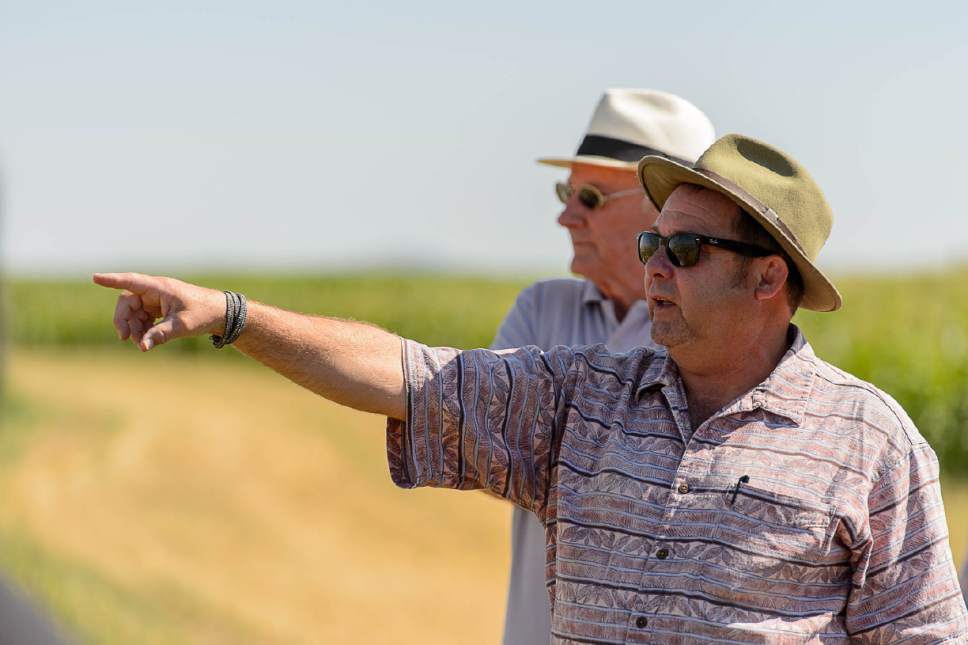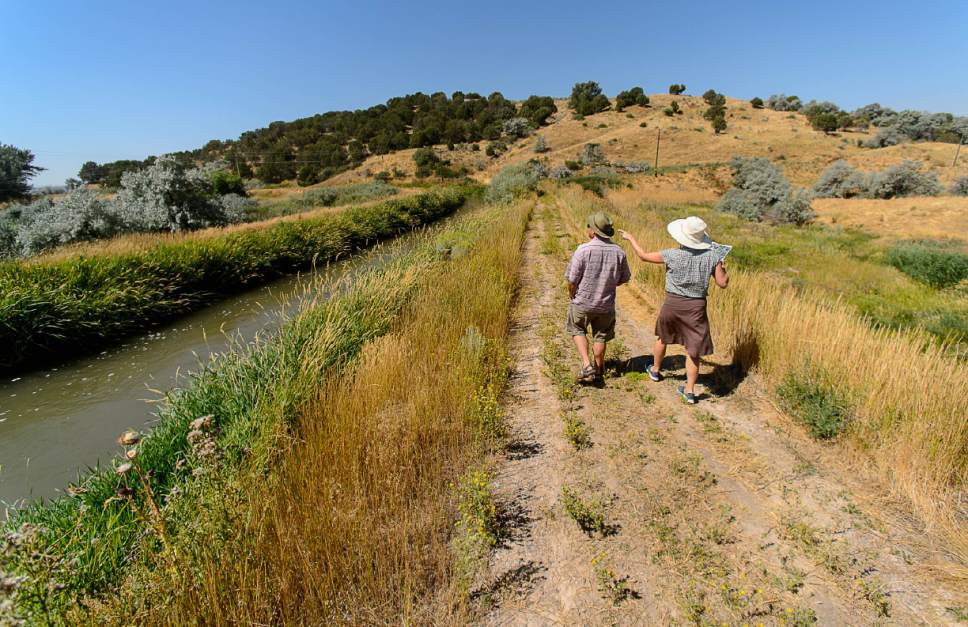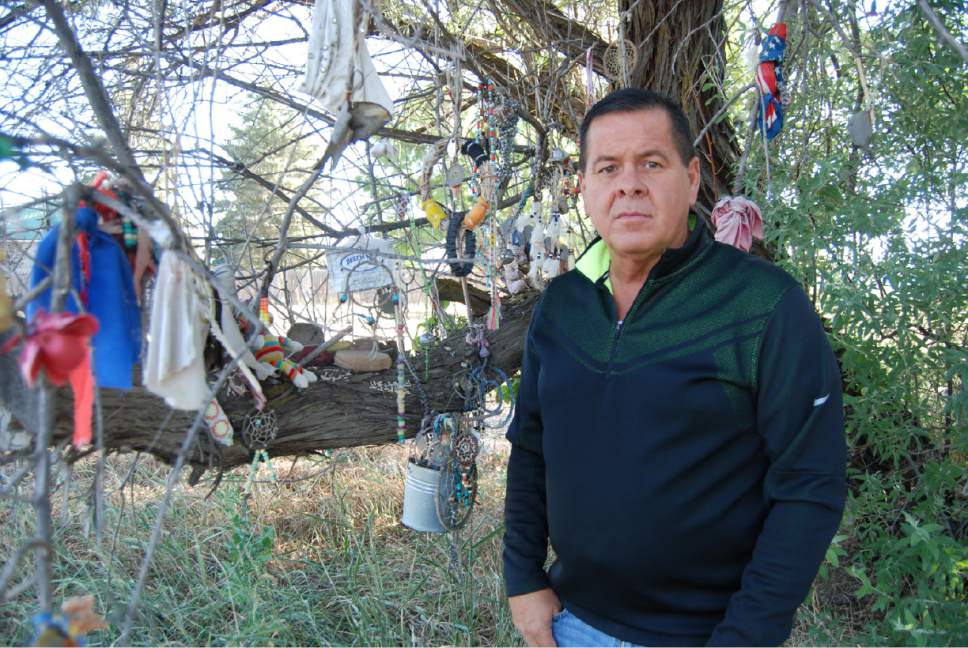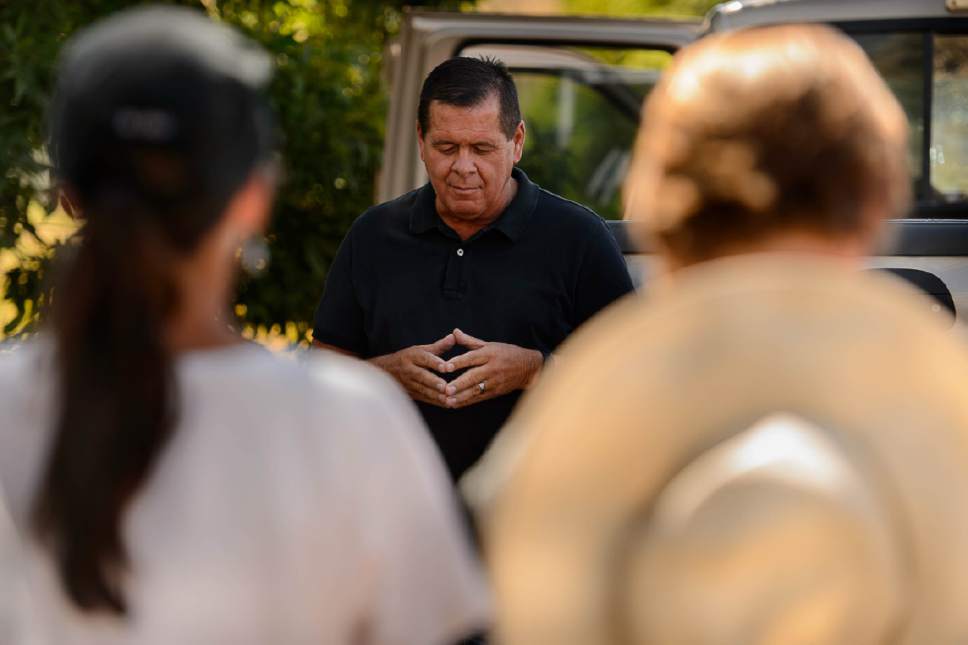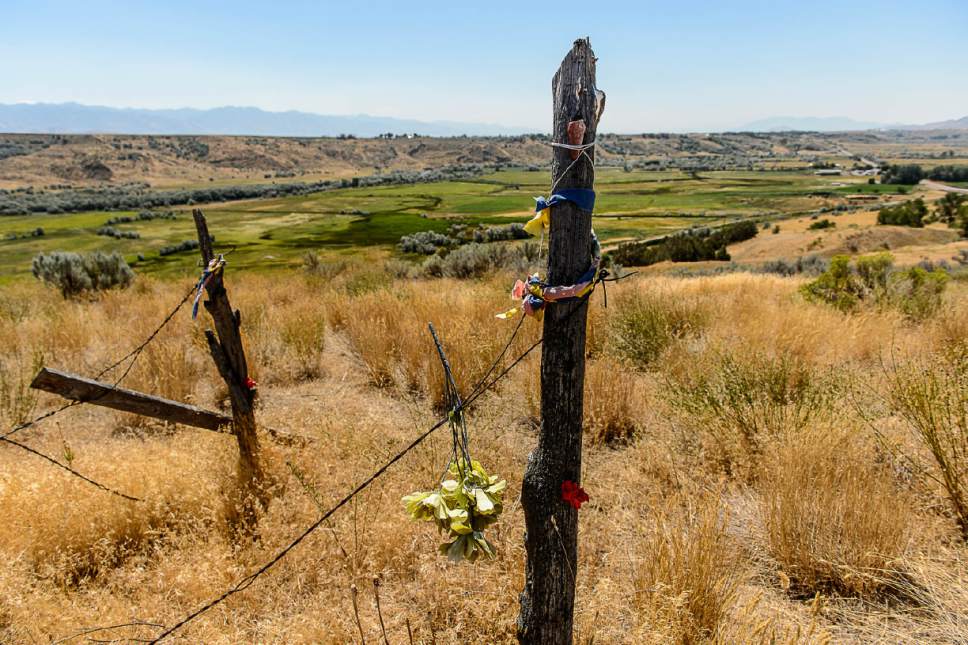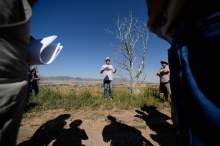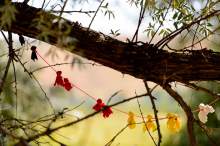This is an archived article that was published on sltrib.com in 2017, and information in the article may be outdated. It is provided only for personal research purposes and may not be reprinted.
Preston, Idaho • Darren Parry's late grandmother often took him to a bend in the Bear River in southern Idaho to talk about what happened there on Jan. 29, 1863. They sometimes listened for the spirits of the Shoshone who lost their lives that frigid morning when Utah-based soldiers under the command of Col. Patrick Connor attacked.
Mae Timbimboo Parry, whose grandfather survived the terror as a 12-year-old, could point to where lodges stood and where the soldiers' charge began, Parry said. She knew where people fell and the direction many fled through deep snow, escaping mounted soldiers as they fired indiscriminately. Shoshone men fought back while the women and children tried to reach the river.
Though given scant attention by historians until recently, the Bear River Massacre — 154 years ago Sunday — was among the worst atrocities perpetrated against American Indians in the western United States.
But the young Parry, now vice chairman of the Northwestern Band of the Shoshone, couldn't square his grandmother's account with what he saw on the ground. Today, the river is not close to the ravine where the village stood that winter.
"That river is a long way away and I could never jibe in my mind how that could be, that in the middle of January they are escaping death by running to a river that is half mile away," he said during a tour of the massacre site, bisected by U.S. Highway 91 a few miles north of Preston.
New scientific analysis of the site, led by Utah State University researchers, has solved that puzzle.
The Bear River, now locked in its channel thanks to upstream dams, was 500 yards closer to the village site in 1863, according to a research team led by Ken Cannon of the Logan firm USU Archaeological Services.
Parry and other Shoshone hope the USU findings will eventually let them take control of the massacre's narrative while shedding light on the nation's troubled relations with its indigenous citizens.
"The problem with Native American culture is we were never able to be the authors of those stories," Parry said. "We have been trying to tell our story for 153 years."
The 154th anniversary will be observed Sunday at 11 a.m. The public is welcome to attend the memorial.
—
Reclaiming the past • In recent years, the Northwestern Band has been acquiring the land and developing interpretive facilities to help the public understand the event from the tribe's perspective and properly honor the dead.
For decades historians referred to the massacre as a "battle." In 1932, the Daughters of the Utah Pioneers erected a monument on a pull-out along the highway. Its plaque largely blames the tragedy on the Shoshone, who were "guilty of hostile attacks on emigrants and settlers," and recalls the recovery of stolen horses and property.
The DUP monument expresses more sympathy for the 14 soldiers who died in the assault and the many injured who were nursed by the women of Franklin, the tiny Mormon settlement that was established a few years before in what was then Washington Territory.
The Northwestern Band has purchased 35 acres near the massacre site with the help of the nonprofit Trust for Public Land with hopes of buying more land near and above Battle Creek ravine, where the village was destroyed. More recently, a pull-out overlooking the valley from the north has been developed, along with a series of signs presenting the Shoshones' version of the incident.
—
Little mercy • The killing of some miners triggered Connor to launch a punitive raid from his headquarters at Salt Lake City's Fort Douglas. The men under his command were the 3rd California Volunteers, soldiers who'd signed up to fight for the Union in the Civil War, which raged far to the east, but were instead assigned to a territorial outpost in Utah.
"They were pretty angry that they got assigned to Salt Lake City to babysit the Mormons and the overland mail routes," Parry said.
Connor justified the raid as a mission to teach the Indians a lesson, but his men showed little mercy once the fighting began. Official accounts put the number of Shoshone dead at 250, but more recently uncovered accounts indicate that as many as 500 were killed, including at least 90 women and children.
The survivors, taken in by Mormon settlers, converted to the LDS faith, took up farming and settled near Washakie, a town The Church of Jesus Christ of Latter-day Saints established in Box Elder County.
Intervening years have brought farmlands, a canal, a federal highway and railroad tracks to the area, greatly altering the small ravine once occupied by the Shoshone village. With the help of USU researchers, Parry said tribal leaders hope to pinpoint the spot where Battle Creek met the Bear River and restore some of the landscape to how it appeared in 1863.
"We can hopefully assist with that," Cannon with USU Archaeological Service said.
—
Sacred burial ground • Using aerial photographs, old maps and historical drawings, geologist Joel Pedersen has been able to determine the location of the Bear relative to the village. The river cuts through sediments left by Lake Bonneville and its meandering course normally changes with regular floods. But it hasn't changed in the past century because diversions have put and end to the river's flood cycles.
Elder Shoshone are uncomfortable with archaeological work, but the Northwestern Band council voted unanimously to endorse Cannon's study, according to Parry.
"When they think of archaeology they think they are digging up everything and collecting bones," Parry said. "But archaeology today has non-invasive ways to do things."
According to Ken Reid, Idaho's state archaeologist who has written a history of the massacre, the victims' remains were never gathered up. "People post-1863 were commenting on the landscape strewn with bones and skulls," said Reid. "Nobody moved back in until 1877."
The site is "sacred," Parry said. "It's a burial ground."
So in their field work, the archaeologists avoided any possibility of disturbing human remains by using technologies that allow them to detect what's underground without digging: ground-penetrating radar; magnetic radiometer; and metal detection.
"Each one provides a different image under the earth," Cannon said.
Radar offers data on depths, he said, while the magnetometer is able to detect buried thermal features such as a burnt lodge or cooking hearth.
The Shoshone have also given their blessing to do limited excavation to "ground truth" their interpretations of the imaging.
—
Power of place • Molly Cannon, an anthropology professor married to Ken Cannon, recovered plenty of metal objects, but nearly all are agricultural detritus and material from railroad construction. Four bullets turned up, three of which appear to post-date the Civil War.
"The one we found that is intriguing is this .44 caliber round ball," Ken Cannon said. "It fits the time frame and some of the pistols California volunteers or Shoshone might have had available to them."
Parry believes the USU work will strengthen the tribe's ability to properly preserve its culture and "honor those who came before.
"By archaeologists telling their story," he said, "they can get things protected that we don't have the voice to do."
Near the massacre site, beside the DUP monument, is an old Russian olive tree whose low branches are draped with dream-catchers, flags, beads, toys, tobacco, coins and dozens of others offerings that give a silent testament to the power of the place.
"We want our story told and people are listening now and that's all we want," Parry told a recent gathering of scientists and historical society members beside the tree.
He recalled his late grandmother telling him that sometimes, in the quiet of the evening, "you can hear the cries of the little children crying for their mothers.
"There have been times I have been here and you can feel the sacredness of where you're are at," Parry said. "It's different from being somewhere else."
Brian Maffly covers public lands for The Salt Lake Tribune. Maffly can be reached at bmaffly@sltrib.com or 801-257-8713.
bmaffly@sltrib.com Twitter: @brianmaffly


